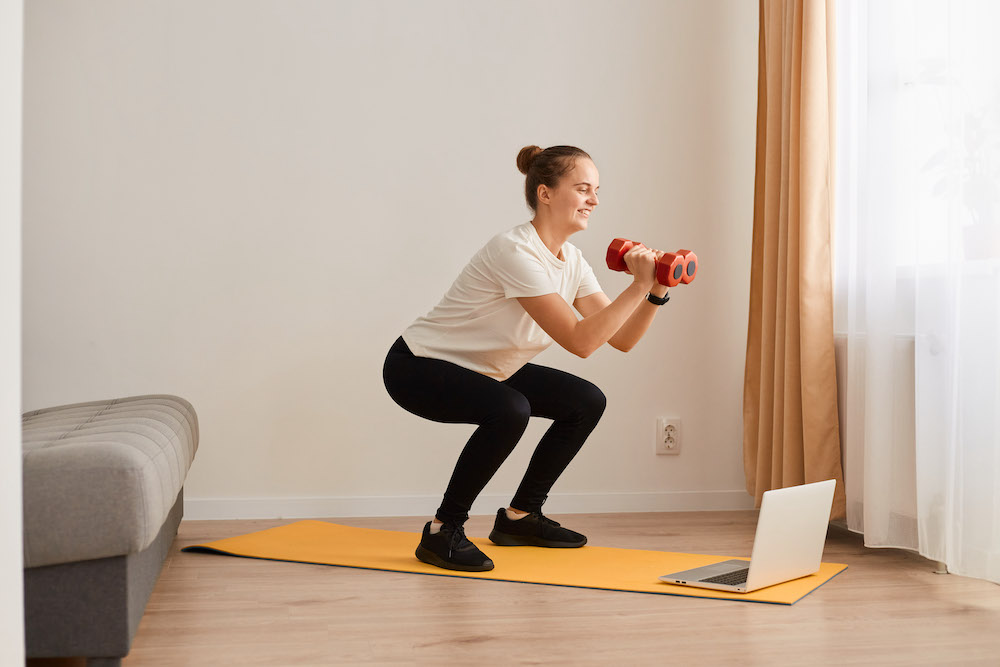In the realm of fitness, the debate about the effectiveness of various exercise routines is ongoing. One approach that consistently garners attention is the utilization of compound exercises. These powerhouse movements offer a multitude of benefits that can significantly impact your fitness journey. We’ll delve into the world of compound exercises, understand their advantages, and explore how they can propel your fitness goals to new heights.

What are compound exercises?
Compound exercises, often referred to as multi-joint exercises, involve engaging multiple muscle groups and joints in a single movement. Unlike isolation exercises that focus on one specific muscle group, compound exercises provide a holistic workout by targeting various muscles simultaneously. Some classic examples of compound exercises include squats, deadlifts, bench presses, pull-ups, and overhead presses.
Compound exercises are strength training movements that engage multiple muscle groups and joints simultaneously. These exercises are highly effective for building overall strength, muscle mass, and functional fitness. Unlike isolation exercises, which target a single muscle group or joint, compound exercises involve complex movements that require coordination and balance. They offer several advantages and are commonly used in various workout routines.
The benefits of compound exercises
Compound exercises are very effective and good to incorporate into you workout routine.
- Efficient time management: Incorporating compound exercises into your routine allows you to maximize your workout time. Since these exercises engage multiple muscle groups, you can achieve a comprehensive workout in a shorter period.
- Muscle building: Compound exercises stimulate significant muscle growth due to the involvement of multiple muscle fibers. This can lead to better muscle definition and overall strength gains.
- Calorie burn: The intensity of compound exercises triggers a higher calorie burn compared to isolation exercises. The afterburn effect, where the body continues to burn calories post-workout, is more pronounced with compound movements.
- Functional strength: These exercises mirror real-life movements, enhancing your functional strength and making daily activities easier to perform. From lifting groceries to climbing stairs, compound exercises prepare your body for various challenges.
- Hormonal response: Compound exercises stimulate the release of hormones like testosterone and growth hormone, which are crucial for muscle growth and overall well-being.
- Balanced development: By engaging multiple muscle groups, compound exercises promote balanced muscle development, reducing the risk of muscle imbalances and related injuries.
Transform your TV into your personal gym!

Tips for incorporating compound exercises
- Warm-up: Always start with a proper warm-up to prepare your muscles and joints for the intensity of compound movements.
- Proper form: Correct form is paramount to prevent injuries. If you’re new to compound exercises, consider seeking guidance from a fitness professional.
- Progressive overload: Gradually increase the weight you lift to challenge your muscles and stimulate growth over time.
- Rest and recovery: Allow adequate time for rest and recovery between workouts to avoid overtraining and support muscle repair.
- Variation: Rotate different compound exercises to target various muscle groups and keep your routine engaging.
- Cool-down: Incorporate a cool-down with static stretches after each workout to promote flexibility and recovery.

The most effect compound exercises!
Compound exercises can be highly effective for home workouts as they target multiple muscle groups and require minimal equipment. Here are some of the most effective compound exercises you can do at home:
-> Push-up
A classic bodyweight exercise that targets the chest, shoulders, and triceps. You can modify push-ups to suit your fitness level, from traditional push-ups to knee push-ups or incline push-ups.
->Squats
Squats engage your quadriceps, hamstrings, glutes, and lower back. They’re excellent for building lower body strength.
-> Lunges
Lunges work your quadriceps, hamstrings, and glutes while also engaging your core for stability. Perform forward, reverse, or lateral lunges to target different muscle fibers.
-> Plank
While often considered a core exercise, planks also engage your shoulders, back, and legs for stability. Hold a plank position for an isometric full-body workout.
-> Mountain climbers
Engage your core, shoulders, and legs with this dynamic exercise. It also provides a cardiovascular component to your workout.
-> Glute bridges
Lie on your back and lift your hips off the ground while squeezing your glutes. This exercise targets your glutes, hamstrings, and lower back.
Work out with Fit at Home
Fit at Home is there for the whole family. With more than 500 workouts for the whole family you can work out in front of your TV whenever it suits you! You can achieve your fitness goals with Fit at Home, whether you want to improve your balance with Pilates, release your stress with meditation, stay fit during your pregnancy, improve your strength.
Become the fittest person of yourself!
✓ Lose weight with our workouts
✓ Work out via your TV, laptop & smartphone
✓ Get inspired by our professional trainers

With Fit at Home you’ll stay active during the day and become the fittest version of yourself. You maintain your fitness routine from the comfort of your own home. Whether you’re unable to go to the gym, prefer working out at home, or need a backup plan for when you can’t access your regular fitness facilities, there are plenty of ways to stay active with Fit at Home.